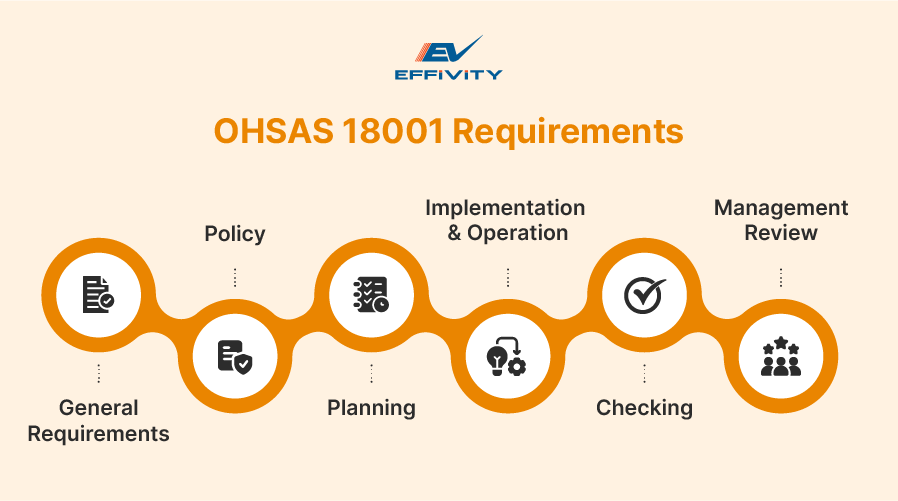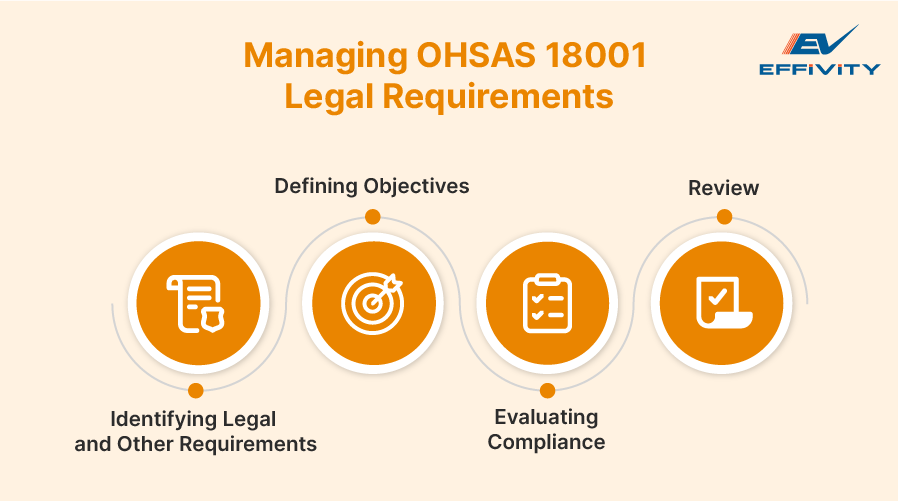The growth and success of any business relies on the hard work of its employees. However, an organization that doesn't prioritize its employees or the environment they work in not only impacts employee well-being but also hurts its own reputation.
This is where occupational health and safety standards deal with the processes and factors that can impact the health, safety, and well-being of employees, workers, or any other person in the workplace. These standards define a framework to help you identify and monitor OHSAS performance and ensure compliance with various OHSAS 18001 legal requirements.
Let's dive into what these OHSAS 18001 requirements are and why they are important for your organization.
Overview of OHSAS 18001 Standard
The occupational health and safety standard lays down the specific OH&S management system requirements to enable organizations to identify, address, and minimize occupational risks and improve health and safety within the workplace.
It is a global standard that helps organizations demonstrate their commitment towards employee security, ensure compliance with legal requirements, and facilitate a safety-first culture. And not just that. The standard encourages continuous organizational improvement with regular risk assessment and management reviews.
Complying with the OHSAS 18001 legal requirements requires you to implement all occupational health & safety laws applicable. Your organization will be deemed compliant when the legal requirements have all been met and the desired changes have been achieved.
OHSAS 18001 Requirements
Let's explore the various regulatory requirements specified by the OHSAS 18001 guidelines-

1. General Requirements
The general requirements of the standard include implementing the OH&S management system. This includes defining the objectives and scope of OHSMS within the organization, such as formulation of policies, processes to identify hazards, risk assessment, and implementation of controls.
The standard also requires the organization to set and review objectives, encourage employee involvement, and ensure robust document control to meet the applicable legal requirements. In simpler words, the general requirements specify a framework needed to implement and manage a successful OH&S system.
2. Policy
The OH&S policy is a statement of intent, highlighting the organization's commitment to addressing risks and cultivating a culture of safety within the workplace. It specifies the principle for action and sets the overall objectives for workplace health and safety in alignment with the organization's goals.
The policy is a foundation of successful OHSMS, guiding implementation, improvement, and risk identification. The ISO 18001 standard specifies that you should include a pledge that you will comply with legal & other requirements relating to OHSAS hazards when creating the policy.
To ensure effective implementation, this policy must be communicated organization-wide, written in an easy language, and relevant to the organization's risks and legal requirements.
3. Planning
The planning phase of OHSAS 18001 is where the organization must understand the legal and other requirements of the standard for systematic management of OHSMS within the workplace.
It also involves identifying hazards, determining necessary controls, setting specific targets aligned with the OH&S policy, and defining plans to set them. In the planning stage, the organization must define the resources, individual roles and responsibilities to manage risks, and the preventative measures necessary to ensure safety.
4. Implementation & Operation
The implementation requirements of OHSAS 18001 involve putting the various plans into action. This means giving the roles and responsibilities to specific employees, engaging resources, and communicating the mechanisms to all the employees.
To ensure complete involvement of employees, organizations must also organize training sessions to help them perform their duties safely. Training programs should cover legal requirements, health and safety policies, emergency procedures, and specific job-related risks.
Continuous training and competency assessments will help maintain a skilled workforce, reducing the likelihood of accidents and ensuring compliance. Backed with proper documentation and regular monitoring of people and processes, the system will function effectively.
5. Checking
Once the OHSMS is implemented, the standard requires you to monitor the performance of the system regularly. This includes conducting internal audits to identify non-compliance, tracking processes to ensure they meet the legal requirements, and implementing corrective actions to address non-conformities.
6. Management Review
Finally, the top management must assess the system's performance, feasibility, and alignment with the organization's objectives and policies. They must consider audit results and feedback to identify opportunities for improvement to boost growth.
This way, the organization can adjust their objectives, identify risks, and take the necessary steps to minimize them and maintain compliance.
Managing OHSAS 18001 Legal Requirements
The planning phase is all about understanding the legal and other requirements of the OHSAS 18001 standard. These include-

A. Identifying Legal and Other Requirements
Legal requirements under OHSAS 18001 include compliance with applicable laws and regulations related to occupational health and safety. Organizations need to identify all legal requirements applicable to their operations systematically. This includes health and safety legislation, industry-specific regulations, and local laws.
In addition, while it is not a requirement to document the process for identifying legal requirements, it can be useful to maintain documents listing the legal and other requirements and updating them regularly. This will ensure you're always on top of the regulations and successfully maintain compliance.
B. Defining Objectives
While implementing the OH&S management system, the organization must have mechanisms to deal with legal requirements. This means maintaining the documentation to show compliance, assigning responsibilities and authorities to meet relevant requirements, and effective training and awareness programs to ensure they understand the requirements.
Further, this also means determining which legal requirements you comply with and which ones you've missed during the identification process to become fully compliant.
C. Evaluating Compliance
Compliance with various legal requirements must be evaluated and documented regularly to ensure these are met and maintained effectively.
Further, any non-conformities must be identified and addressed immediately to minimize their impact on the organization with appropriate corrective actions. Depending on the specifics of the legal requirements and non-compliance, this could also involve informing the authorities immediately.
D. Review
The OHSAS representative must also ensure that the top management is regularly informed of any changes in the legal requirements and is on top of a compliance evaluation. This will allow them to understand the risks of non-compliance and take action to rectify any risky situation.
Wrapping Up
Understanding and implementing OHSAS 18001 legal requirements is essential for any organization committed to ensuring a safe and compliant working environment. Organizations must identify relevant legal requirements, ensure proper documentation, train employees, practice strong risk control hazards, and commit to continuous improvement.






























